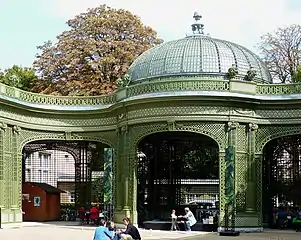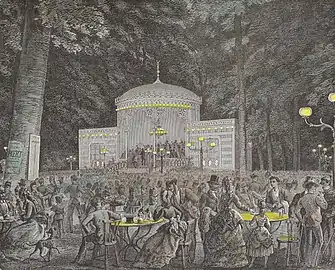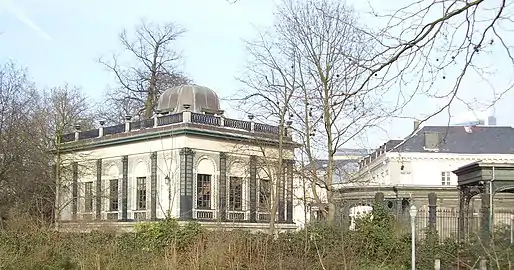
The Vauxhall of Brussels (French: Vauxhall de Bruxelles, Dutch: Vauxhall van Brussel), otherwise known as the Waux-Hall, is a historic building in Brussels Park in Brussels, Belgium. It is named after the pleasure gardens of Vauxhall in London, which only became known to the inhabitants of Brussels in 1761, when a ballet entitled Le Phaxal was put on at the Theatre of La Monnaie. In Paris, the stage-builder Torré opened a "garden of amusements" in 1764, which the public came to call the Vaux-Hall de Torré. A Vaux-Hall d'hiver ("Winter Vauxhall") was set up in 1769 at the Foire Saint-Germin.
The history of the Brussels' Vauxhall is intimately linked to that of the Royal Park Theatre. It was opened in 1781 by Alexandre Bultos and his brother Herman Bultos (co-directors of La Monnaie and of the Park Theatre). It was initially a drinking palace, concert hall and theatre. Since 1818, it has been the property of the City of Brussels. It has been used by the arts and literature club Cercle Gaulois and its predecessors, as a venue for meetings, dinners, exhibitions and concerts.[1]
 The Vauxhall in 1872, etching from L'Illustration Européenne
The Vauxhall in 1872, etching from L'Illustration Européenne The Vauxhall in 2007
The Vauxhall in 2007
References
Citations
- ↑ Het Park van Brussel (Warande) Archived 6 March 2014 at the Wayback Machine (in Dutch)
Bibliography
- Guido J. Bral, De Waux Hall in Brussel, in: Monumenten en Landschappen (in Dutch), 1986, nr. 3, p. 35–53
- Henri Chevalier, Le Vauxhall de Bruxelles, in: Cahiers bruxellois (in French), 1956, nr. I-3, p. 195–206
External links
- History of the Cercle gaulois and the Vauxhall (in French)